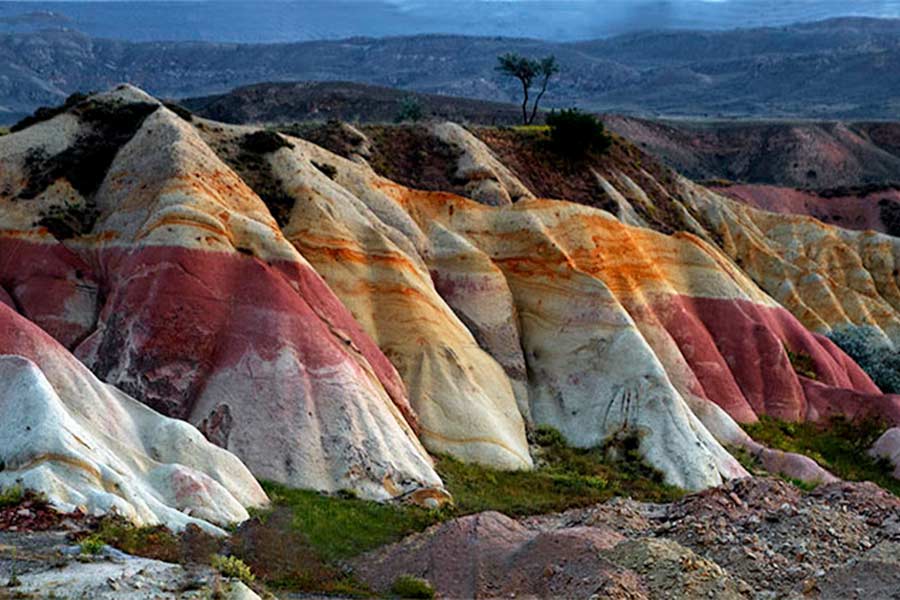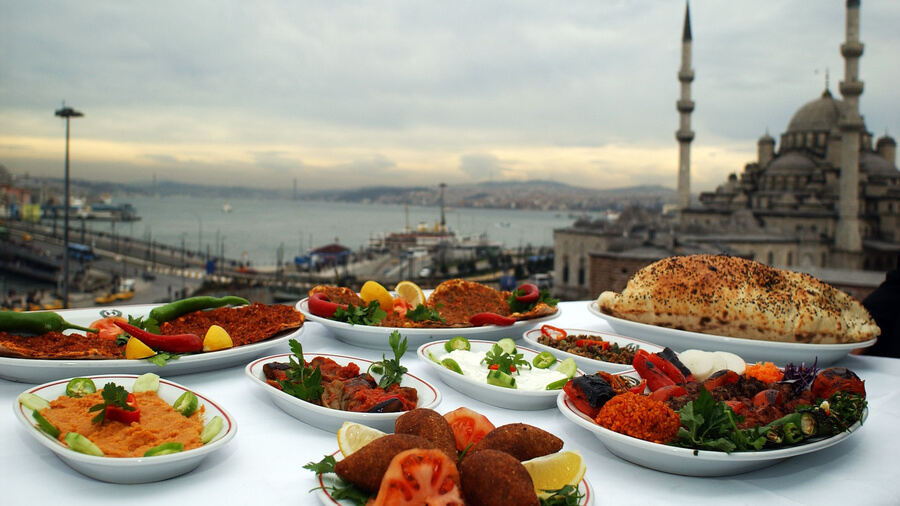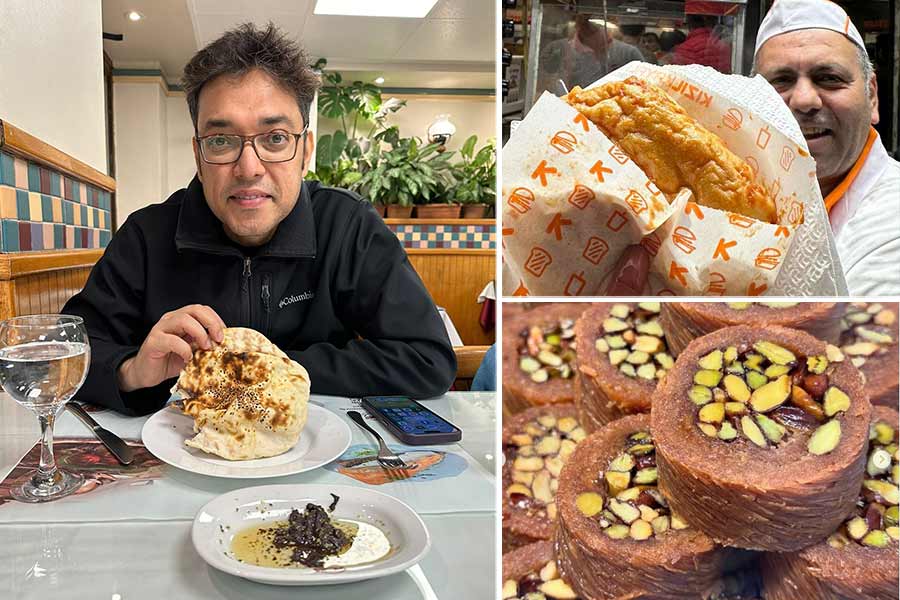For my three-day stay in Cappadocia, I am staying at Okhtai’s place: a cavern hotel in the small town of Goreme, which is a great base to explore this fascinating part of Anatolia in central Turkey.
Millions of years ago, the moon-like landscape of Cappadocia was shaped by the eruption of the volcanoes. The lava flows had formed tuff rock, which the wind and the rain sculpted into winding valleys of craggy cliffs and conical fairy chimneys dotted with pockmarked caves and towering ravines. The earliest settlers in this part of central Anatolia had curved their humble homes in these caves — a tradition followed till date. And many of the Cappadocian homes, like that of my host Okhtai, have been converted into boutique cave hotels.
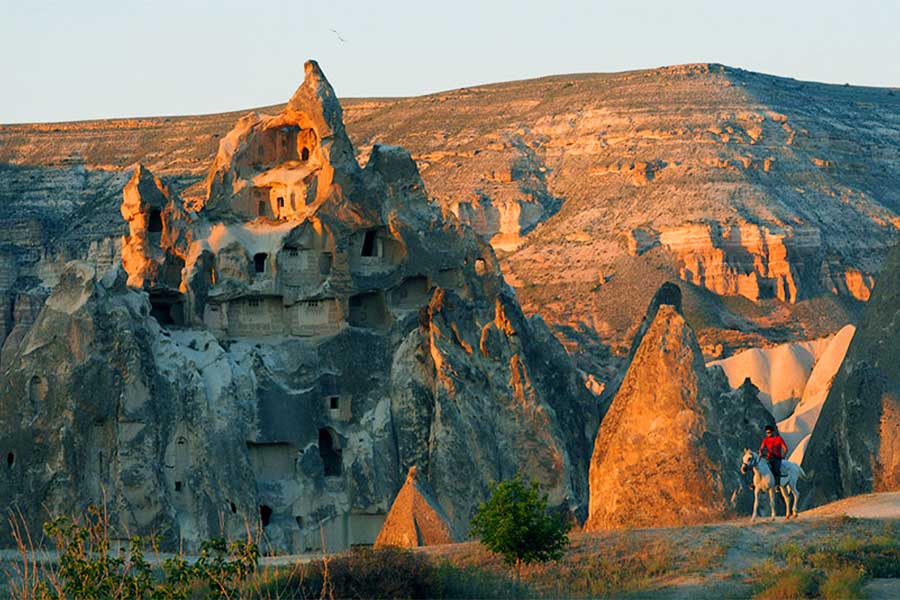
The name ‘Cappadocia’ means ‘land of beautiful horses’, an epithet most apparent in the rays of the setting sun
During the 10th and 11th centuries, Byzantine Christians escaped the advancing Arabian armies and took shelter in the cliffside chambers tucked deep in the folds of this surreal moonscape. The religious Christians not only built their rock-cut living quarters but also a collection of cavern churches and chapels, now housed in Goreme Open Air Museum, a UNESCO World Heritage Site. Despite centuries of weathering and vandalism, many of the beautiful frescoes of the cave churches have retained their pristine tones and colours, portraying scenes from the Bible and the Life of Christ, lending a Biblical solemnity to the barren splendour that hems the museum.
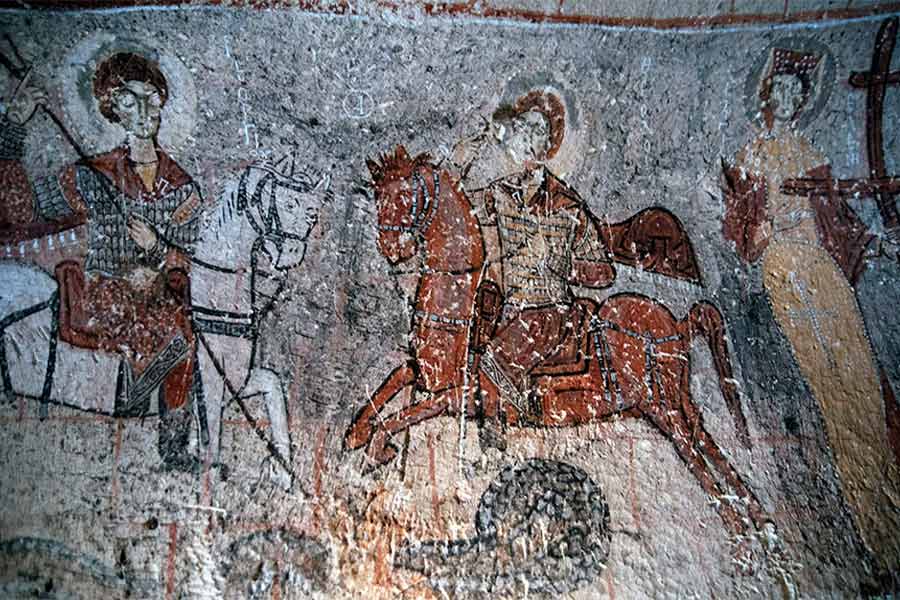
Byzantine frescoes inside a church in Goreme Open Air Museum, a UNESCO World Heritage Site
Next morning, we head out to Devrent Valley. The lunar landscape looks like a sculptural amphitheatre. The clustered formations of volcanic cones and pinnacles strangely resemble various animals and birds. The next pit stop is Monks Valley, where bizarre, mushroom-shaped fairy chimneys shoot up from the surrounding vineyards. Monks Valley is uninhabited now but hermits and monks once made their shelters amid these surreal formations.
After a quick stopover at the Uchisar Castle, the highest point in whole of Cappadocia, where the stunning panorama from the upper floors leaves me spellbound, we move on move on to Avanos. The Red River quietly flows by the small town and as we stroll through the labyrinthine alleys, lined with grand, crumbling Greek houses of a bygone era, we cross the small river a few times before stopping at a pottery shop.
Typically painted in turquoise or the earthy browns and bright yellows, the beautiful pieces are traditionally shaped by men and painted by women. We collect a couple of pieces as souvenirs and settle for a late lunch of fresh trouts, Greek salad and baklava at a riverside restaurant.
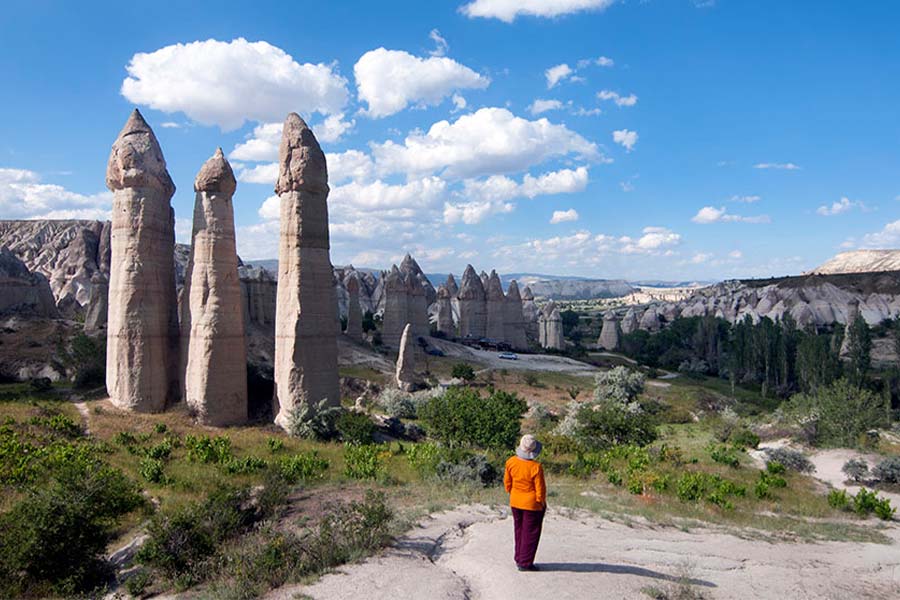
The fairy chimneys of Cappadocia
Breakfast, the next morning, starts at the ungodly hours of 4am. We gulp down some piping hot coffee to ward off the last vestiges of sleep and watch the 30-metre-tall balloon in the field getting inflated with power fans. The pilot beckons us and we hop in the open balloon basket just as the first shot of power flames from the propane burner is injected into the balloon envelope. And off we soar, the subtle motion of flight exhilarating our senses.
The mild breeze carries us over the town of Goreme and the valleys, a thin layer of early morning mist draped over the tall volcanic spires. The staggering panoramic view beneath leaves us speechless. We span up a hillside and dozens of balloons explode into view, a colourful mélange hovering above the valleys. After about 40 minutes of riding , our pilot deftly manoeuvres the balloon through a narrow cleft of a valley and we hop off the basket, a little breathless from the intense experience, after a smooth landing.
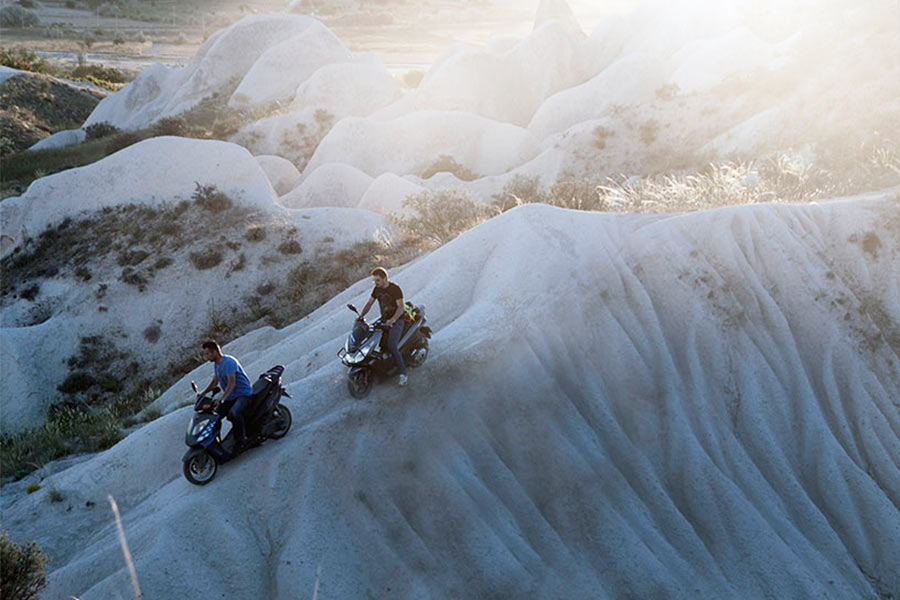
Biking through the rugged landscape
A two-hour afternoon drive takes us to the small town of Cavusin, dominated by a cliff where a cluster of abandoned houses tumbles down the slope in a delightful disarray. We find a handful of souvenir shops, in slumber mode, now that the last of the day-tour buses have rolled out of town. We take the dusty, winding path that meanders out of town into the valley, and takes us across the most picturesque part of Cappadocia – the Red and Rose Valley.
We hike deep into the valley and as we walk through a land that seems to be twisted out of proportion by an eccentric creator, dusk tints the honeycombed hills and towering boulders in an otherworldly glow of rust-red. Our guide points to a small hill and says “The best views are from up there.”
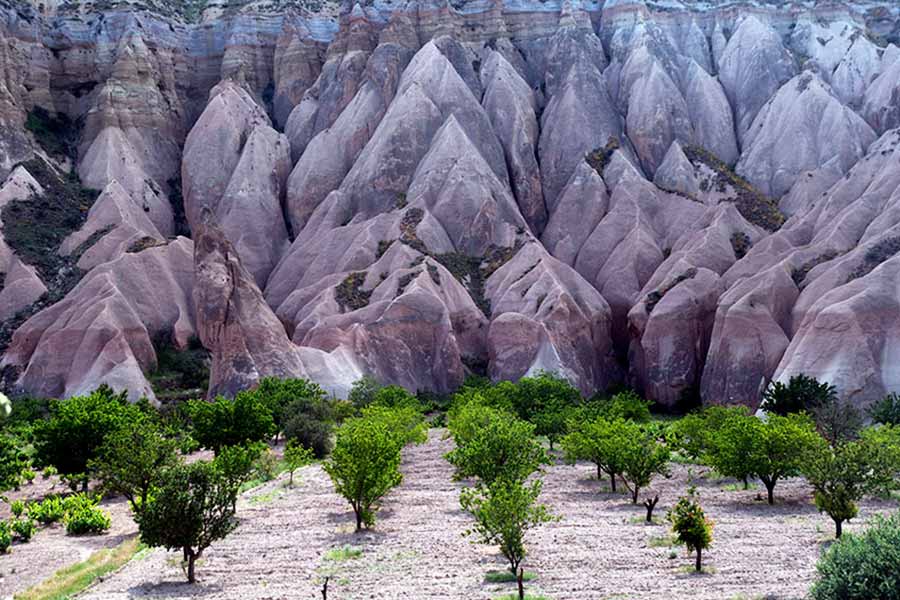
Apple orchards with the stark, contrasting landscape
We clamber to the top and a stunning vista rolls out below – rows after rows of jagged cliffs with their crimson contours fill the horizon. As the sun finally sets, the last rays filter into the nooks and corners of the craggy ridges, exposing bizarre shapes and designs on furrowed rock faces. We slowly retrace our steps through an enchanting ensemble of twilight colours - blue, violet, red and orange – on the hills of Cappadocia.
